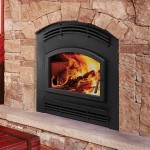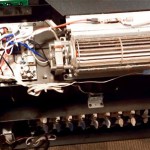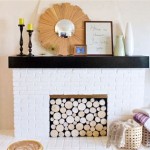How to Install a Wood Beam Fireplace Mantel on Brick
Installing a wood beam fireplace mantel can dramatically enhance the aesthetic appeal of a living space, adding rustic charm and architectural interest. Mounting a substantial wood beam onto a brick fireplace requires careful planning, precise execution, and the right tools to ensure a safe and secure installation. This article details the process of installing a wood beam fireplace mantel on a brick surface, emphasizing the key steps involved in achieving a professional-looking result.
Planning and Preparation
Before commencing the installation process, thorough planning and preparation are crucial. This stage involves several important considerations, including selecting the appropriate wood beam, assessing the brick surface, and gathering the necessary tools and materials.
Wood Beam Selection: The choice of wood beam will significantly impact the overall appearance and structural integrity of the mantel. Consider the dimensions of the fireplace, the desired aesthetic (e.g., rustic, modern, traditional), and the weight-bearing capacity of the brick. Opt for a wood beam that is adequately sized and properly seasoned to minimize warping or cracking over time. Common choices include reclaimed wood, solid hardwood beams, or engineered wood products that mimic the look of natural wood.
Brick Surface Assessment: Carefully inspect the brick surface to identify any loose or damaged bricks. Repair any structural weaknesses before proceeding with the installation. Ensure the surface is clean and free of debris. It's also important to determine the type of brick being used, as different types may require specific drilling techniques and anchoring systems. Hard-fired bricks will require more robust drilling methods than softer, more porous bricks.
Gathering Tools and Materials: The following tools and materials will be required for the installation:
* Wood Beam Mantel * Measuring Tape * Level * Pencil or Marker * Drill with Masonry Drill Bits (various sizes) * Hammer Drill (recommended for hard brick) * Construction Adhesive Suitable for Brick * Heavy-Duty Masonry Anchors (e.g., sleeve anchors, wedge anchors) * Washers (compatible with the anchors) * Socket Wrench or Adjustable Wrench * Safety Glasses * Dust Mask * Stud Finder (optional, to locate hidden framing behind the brick) * Shims (optional, for leveling)Step-by-Step Installation Process
The installation process involves carefully measuring, marking, drilling, and securing the wood beam to the brick surface. Accuracy and attention to detail are paramount to ensure a stable and visually appealing mantel.
Measuring and Marking: Begin by determining the desired height of the mantel above the fireplace opening. Building codes often specify minimum clearance requirements between the mantel and the firebox opening. Use a measuring tape and level to mark the location of the mantel on the brick surface. Ensure the line is perfectly level to prevent a tilted appearance. Mark the locations for the anchor points, spacing them appropriately to distribute the weight of the beam evenly. It is generally recommended to have at least two anchor points for smaller mantels and three or more for larger, heavier beams.
Drilling Pilot Holes: Using a drill with a masonry drill bit appropriate for the type of brick, carefully drill pilot holes at the marked anchor points. Start with a smaller bit to create a pilot hole, then gradually increase the bit size to match the diameter of the masonry anchors. For hard bricks, a hammer drill is highly recommended to ensure efficient and accurate drilling. Drill the holes deep enough to accommodate the entire length of the anchor, as specified by the manufacturer. Always wear safety glasses and a dust mask to protect against flying debris.
Preparing the Wood Beam: Pre-drill holes in the back of the wood beam that align with the drilled holes in the brick. The diameter of these holes should be slightly larger than the diameter of the anchors to allow for easy insertion. Apply a generous amount of construction adhesive suitable for brick to the back of the wood beam where it will make contact with the brick surface. This adhesive will provide additional bonding strength and help to prevent the mantel from shifting over time.
Installing the Anchors: Insert the masonry anchors through the holes in the wood beam and into the drilled holes in the brick. Depending on the type of anchor being used, follow the manufacturer's instructions for proper installation. Sleeve anchors typically require tightening with a wrench to expand the sleeve and grip the brick. Wedge anchors are driven into the hole with a hammer and then tightened to expand the wedge and create a secure hold. Ensure the anchors are tightened sufficiently to provide a firm and stable connection between the wood beam and the brick surface. Use washers between the anchor heads and the wood beam to distribute the pressure evenly and prevent the anchors from sinking into the wood.
Ensuring a Secure and Level Installation
Achieving a secure and level installation is critical for the long-term stability and aesthetic appeal of the wood beam mantel. Several techniques can be employed to ensure a professional-quality result.
Checking for Level: After installing the anchors, use a level to verify that the wood beam is perfectly level. If necessary, use shims to adjust the position of the beam and compensate for any irregularities in the brick surface. Place the shims between the wood beam and the brick at the anchor points until the beam is level. Once the desired level is achieved, tighten the anchors further to secure the beam in place.
Assessing Weight Capacity: Consider the weight-bearing capacity of the installed mantel. If the mantel is intended to support decorative items or other objects, ensure that the anchors and the brick surface can handle the additional weight. If necessary, reinforce the installation by adding more anchors or using a stronger type of anchor.
Addressing Aesthetic Considerations: After the structural aspects of the installation are complete, focus on the aesthetic details. Conceal the anchor heads by using decorative caps or plugs that match the color and texture of the wood beam. Fill any gaps between the wood beam and the brick surface with caulk or wood filler to create a seamless and professional finish. Clean the surface of the mantel to remove any dust or debris. Apply a sealant or finish to the wood beam to protect it from moisture and enhance its natural beauty.

How To Install A Floating Mantle The Easy Way In Just One Afternoon

How To Install A Mantel On Brick Fireplace 1905 Farmhouse

How To Install A Floating Mantle The Easy Way In Just One Afternoon

How To Install A Floating Mantle The Easy Way In Just One Afternoon

How To Install A Floating Mantle The Easy Way In Just One Afternoon

How To Install A Mantel On Brick Fireplace 1905 Farmhouse

How To Install A Mantel Over Brick Fireplace Federal Brace

How To Install A Mantel On Brick Fireplace 1905 Farmhouse

Wood Beam Mantel Diy For Under 30 Fireplace Makeover

The Making Of A Slip Covered Mantel Made By Carli
Related Posts








